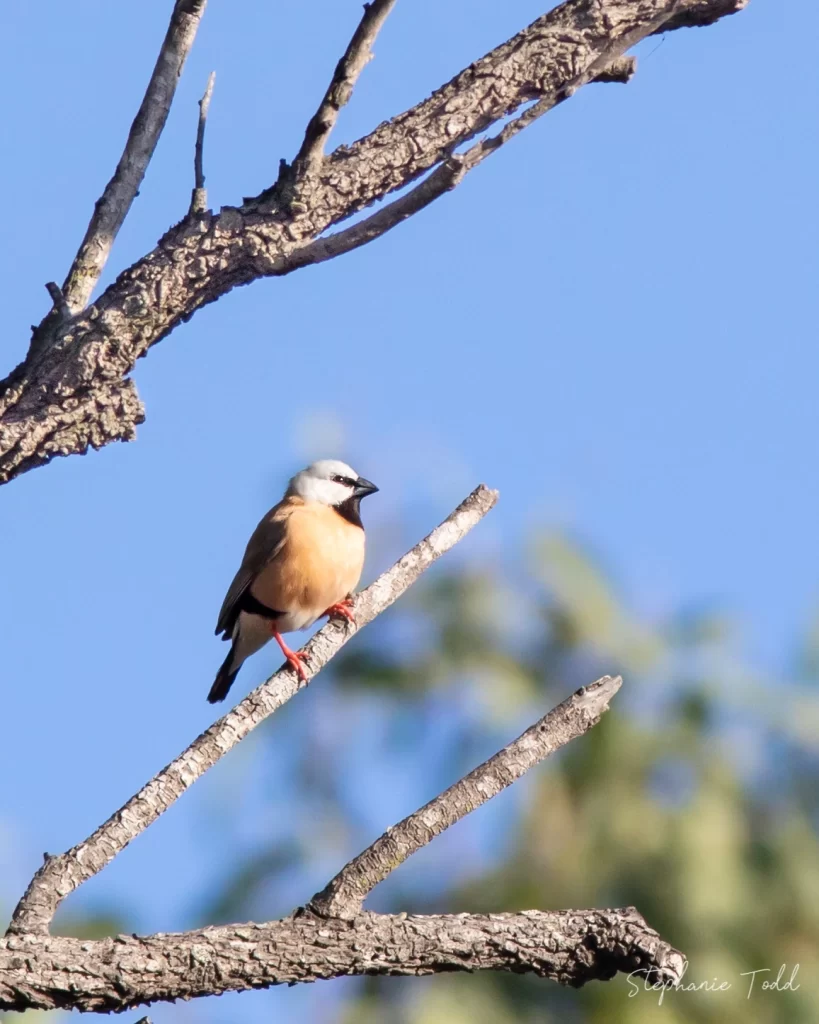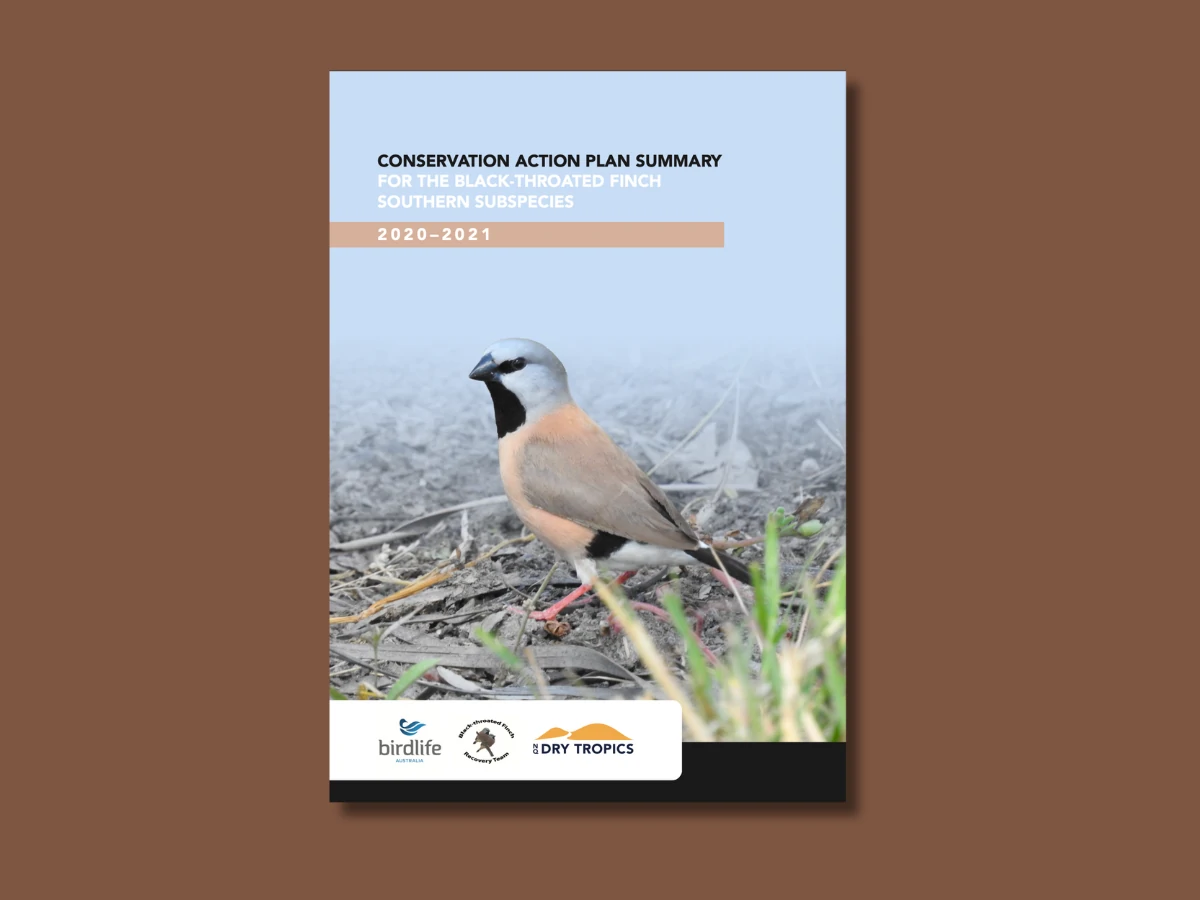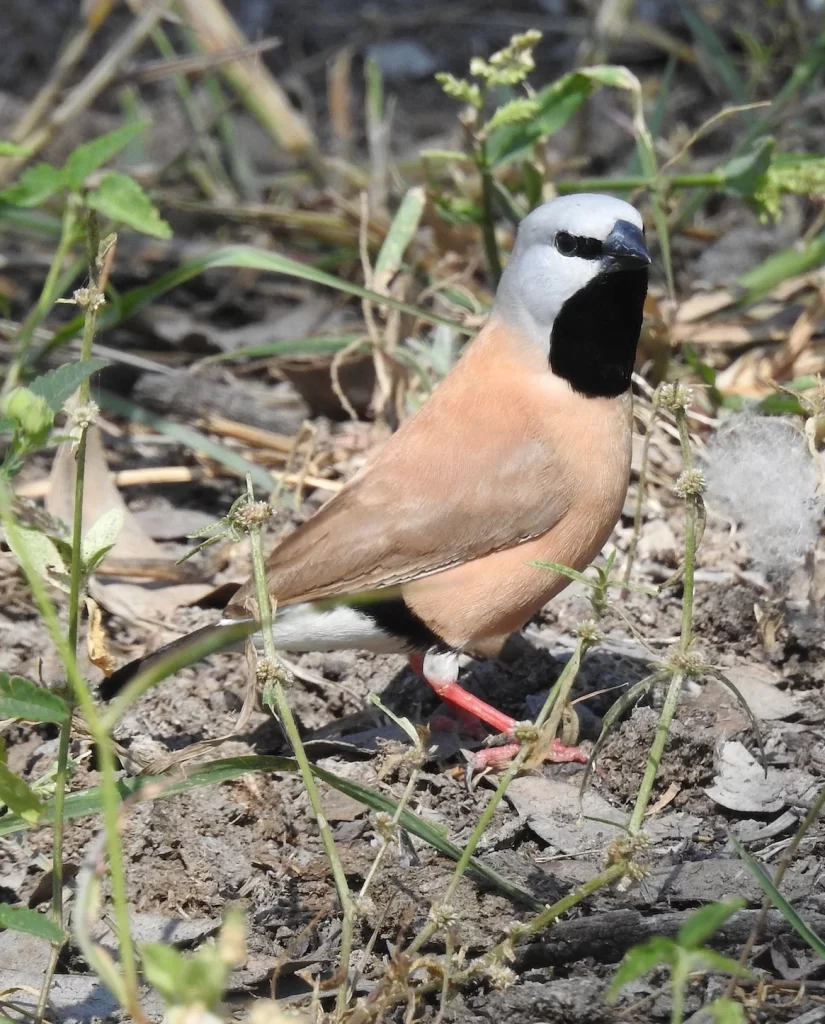Conserving the Black-throated Finch
Conserving the Black-throated Finch
MEET THE SPECIES
Black-throated Finch
There are two subspecies of Black-throated Finch; the northern and southern subspecies. Both subspecies are small, stocky birds with grey heads and thick, black beaks. They have cinnamon brown bodies and neat black throats.
The subspecies can be differentiated by the colour of their rump; the northern subspecies has a black rump and the southern subspecies has a white rump.
CONSERVATION STATUS
Southern subspecies: Poephila cincta cincta
The southern subspecies of Black-throated Finch is listed as ENDANGERED under Federal and State legislation.
Historically, this charming bird occurred from north-eastern New South Wales, through eastern and central Queensland to the headwaters of the Gilbert, Mitchell and Burdekin Rivers in north-eastern Queensland. It has since disappeared from southern parts of its range, with its extent estimated to have contracted by as much as 90%.

EDUCATING & RAISING AWARENESS
Frequently Asked Questions
When do Black-throated Finches breed?
Like most Australian finch species, the timing and duration of the breeding season is influenced by the availability of food. Breeding varies from year-to-year according to rainfall patterns and site-specific circumstances.
Under optimal conditions the species can breed continuously throughout the year, though most breeding occurs in the first half of the year.
Five or six eggs are laid in a clutch and juvenile birds remain with their parents for a few months after fledging.
Why have Black-throated Finches declined so much?
There are many contributing factors to the decline of the Black-throated Finch and other seed eating birds (granivores). Major change to the tree layer and grass layer in the landscape in which they live, is a key factor in their decline.
These changes are thought to be caused by land clearing, changes in pasture composition, heavy grazing, oversowing, altered fire regimes and increasing urbanisation.
When do Black-throated Finches eat?
Where can I see Black-throated Finches?
What other birds look similar to Black-throated Finches?
Is there a Recovery Team for the species?
Have you seen a Black-throated
Finch recently?
GET INVOLVED
Events & Projects

Conservation Action Planning
Learn more about the Recovery Team’s vision, and strategies to help improve and restore populations and habitats.

Annual Waterhole Count
The annual waterhole count helps to improve our understanding of the populations of finches in the Townsville region and is a rare opportunity to see the birds in the wild.
Looking to volunteer or get involved in the Black-throated Finch conservation efforts?

ABOUT US
Black-throated Finch Recovery Team (BTFRT)
Consisting of volunteer community and organisation representatives and aims to foster the conservation and recovery of the Black-throated Finch southern subspecies, the BTFRT was formed in 2002.
The BTFRT was instrumental in the development of the first Black-throated Finch Recovery Plan which was approved by the Commonwealth Minister of Environment, Water, Heritage and Arts in 2008. In 2022-2023, the BTFRT completed a review of and redrafted the National Recovery Plan for the Southern Black-throated Finch. Public comments for this revised Draft Recovery Plan closed in September of 2023, but you can read the draft recovery plan here.
The objectives of this website are to:
- Raise awareness and share information about the Black-throated Finch,
- Provide an opportunity for volunteers and supporters to contribute to the understanding and protecting of the Black-throated Finch and it’s habitat,
- Share details of current and planned activities of the Black-throated Finch Recovery Team,
- Provide links to related and other useful websites.
FIND OUT MORE INFORMATION
Resources
A number of research papers have been produced on Australian finches and in particular, the Black-throated Finch. These articles can commonly be accessed via ResearchGate.
The BTFRT has provided the following articles for your viewing:
- Research Paper – Richard Zann (1976)
- Honours Thesis – Nicole Isles (2007)
- Professional Study – Habitat Management Guidelines (2011)
———
There are also a number of freely available data resources for Australian birds, such as Birdata, a platform to collect the scientific data that researchers use to help keep Australian birds safe.
Download the BTF Management Guidelines HERE.
Check out the list of relevant organisations below to see what work they do for the Black-throated Finch:
Download resources for schools below:
BirdLife Australia
BirdLife Australia are strong advocates for Australian birds and the conservation of their habitat. They have a number of programs of which you can contribute to. You can also sign up as a member of one of their local Birdlife groups.
Birdlife Townsville are an active member of the BTFRT.
Other Australian Conservation organisations
GET IN TOUCH
Contact Us
If you want to help the Black-throated Finch Recovery Team or find out more information, fill out the form below.
